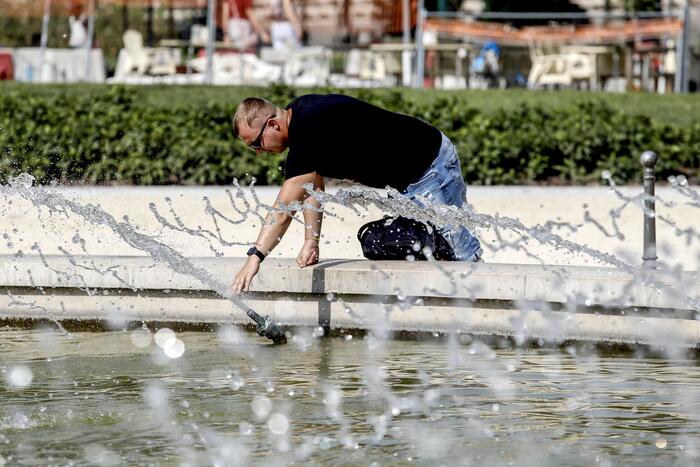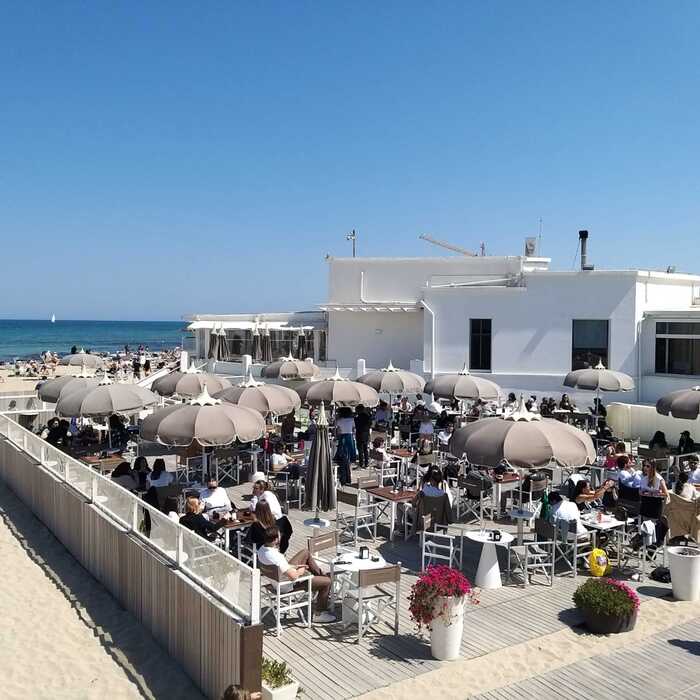The
Lucifer
heat wave
is turning Italy, and in particular the south of the country, into an inferno with temperatures constantly exceeding 40 degrees and often around 45 degrees. Although the episode is affecting the southern part of the country and specifically to the regions of Sicily, Calabria and Apulia, in the north the thermometers have also soared and several cities are at the highest level of alert these days.
In Syracuse, a coastal city on the eastern tip of Sicily, the mercury reached 48.8 degrees on Wednesday, according to measurements from the regional government's Agrometeorological Information Service (SIAS).
This extreme temperature has yet to be validated in the coming days by the World Meteorological Organization, but if confirmed it would mean a new heat record in Europe, since the highest officially registered mark so far, of 48 degrees, occurred in Athens in 1977. In 1999, 48.5 degrees were reached at an unofficial station in Catenanuova, also in Sicily, but they were not confirmed.
In video, these are the images of the fires in Italy, where the southern region is the most affected.REUTERS / EFE / FRANCESCO RUTA
Although the temperatures are undoubtedly exceptionally high, the exact values depend on the measurement methods used and their precision.
For example, the electronic thermometers, exposed to the sun, of some Sicilian pharmacies reached 51 degrees.
The Army's gauges have registered temperatures that touch 45 degrees at most in many parts of the island, particularly in inland areas.
In Sardinia peaks of 43.1 degrees have been reached, in Calabria (the tip of La Bota) they touched 42;
and in Campania, with its capital in Naples, and in Lazio, Rome, it reached 40 degrees.
More information
Canada at 49 degrees: the keys to increasingly frequent heat waves
Temperatures like in Iraq: this will be the extreme heat in Spain
climate blames humanity for the increase in extreme events
Meteorologists warn of a future with more heat waves like the one Spain is experiencing
This Thursday, in total throughout the country there were ten cities - two days ago there were only four - in red alert, the maximum level, due to high temperatures, such as Palermo, Bari or Bologna or Rome, where the asphalt melts as the pedestrians and by Friday, the Health Ministry added another five towns to the list, including Florence and northern Bolzano.
Thermometers are expected to continue to run wild over the weekend.
The red alert is used in the heat wave bulletin of the ministry to mark urban centers in which there is a high risk for the entire population, and not only for the weakest sectors, such as the sick and the elderly, for what the orange alert is used.
The Mediterranean on fire
The situation, with torrid values above 40 degrees, is replicated in much of the eastern Mediterranean, where countries such as Greece, North Macedonia, Albania, Algeria or Turkey are experiencing the worst heat waves in recent years and continue to be grass of flames.
A fire in Giarratana (Sicily), last Wednesday.
ANTONIO PARRINELLO / Reuters
The high temperatures come three days after the forceful scientific report of the IPCC, the UN panel of experts on climate change, which warns that human action has already caused unprecedented alterations in the climate system, which is related to extreme weather events. “The extreme phenomena that occur in the Mediterranean and in Italy are largely due to anthropogenic global warming and the emission of greenhouse gases into the atmosphere. This global warming has produced important changes in our latitudes, especially in air circulation. The equatorial-tropical circulation has expanded northwards, so that African anticyclones, which used to remain over the Sahara desert, can now enter the Mediterranean ”,The Italian scientist specializing in climatology Antonello Pasini, of the National Research Council, has warned. And he has pointed out: “Until a few decades ago, Mediterranean summers were dominated by the famous Azores anticyclone that, arriving from the Atlantic and entering the Mediterranean, acted as a stable air cushion that protected us from disturbances from the north of Europe and the fierce African heat. Now, with this widening of the equatorial-tropical circulation, the African anticyclones have a free way to enter, causing strong heat waves ”.“Until a few decades ago, Mediterranean summers were dominated by the famous Azores anticyclone that, arriving from the Atlantic and entering the Mediterranean, acted as a stable air cushion that protected us from disturbances from northern Europe and the fierce African heat. Now, with this widening of the equatorial-tropical circulation, the African anticyclones have a free way to enter, causing strong heat waves ”.“Until a few decades ago, Mediterranean summers were dominated by the famous Azores anticyclone that, arriving from the Atlantic and entering the Mediterranean, acted as a stable air cushion that protected us from disturbances from northern Europe and the fierce African heat. Now, with this widening of the equatorial-tropical circulation, the African anticyclones have a free way to enter, causing strong heat waves ”.
The heat wave has aggravated the many fires that are spreading through southern Italy, especially in Sicily, where the inhabitants of some areas had to be evacuated, and in Calabria, where three people have died as a result of the fire, It has mobilized the Army to fight the flames. Across the country on Wednesday there were more than 30 active outbreaks, also counting those of Sardinia, Basilicata, Campania, Lazio and Apulia.
Although many of the fires are provoked, the Coldiretti agricultural association has estimated that climate change has favored fires to triple compared to the average between 2008 and 2020. The association recalled that to the immediate damage we must add the long-term damage, taking into account that it will take about fifteen years to recover the entire forest ecosystem and all traditional human activities, from collecting wood to truffles and small fruits, through collecting mushrooms and ecotourism.
In this summer marked by extreme events and scorching temperatures, the heat wave has also had an impact on fruit prices, which are down 4.9% compared to the same period last year. Animals are also suffering from the heat on farms and cows are producing up to 10% less milk than in less hot periods. In many places, flames have scorched pastures and forage used for livestock, and have also burned fruits, vegetables, vineyards and olive groves.








